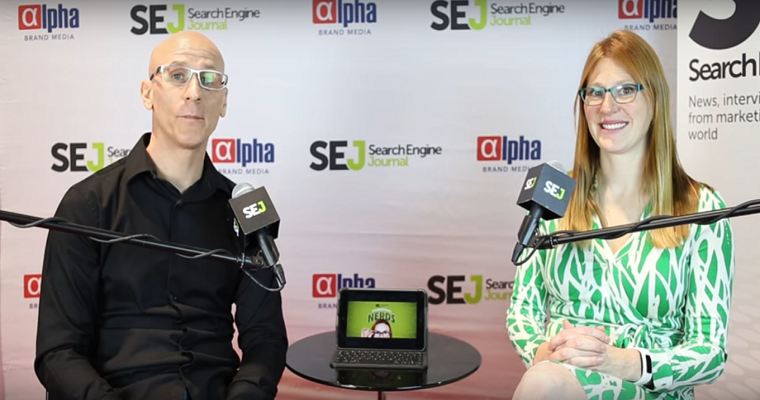Building a cohesive search strategy can be difficult. There are a lot of factors to consider, including new search methods that are becoming increasingly popular such as altered reality and voice search and AI. But, other lesser known search strategies have the potential to increase engagement.
Learn more about overlooked search strategies you can use to get that much-needed boost in conversions.
The Benefits of Bing for Consumers and Advertisers
At Pubcon 2016 in Las Vegas, Brent Csutoras, SEJ’s Chief Social Media Strategist, sat down with Christi Olson of Microsoft to talk about the benefits of Bing for consumers and advertisers.
Here Are Some Key Takeaways from Her Interview:
- Bing is finding ways to create a search results page that helps consumers take action right away. It’s not just about the links on the page anymore. It’s about what users are trying to do, the intent behind their query, and helping them get to their intended action quickly.
- Bing presents more information and context based on user search behavior — what they’ve looked at in the past, how they’ve clicked, and how they engage with the search engine. A machine learning algorithm looks at user behavior over time. So, if you’re looking for your ad and do the same query repeatedly, your ad might not appear in search results because you’re not clicking on it. This teaches the algorithm that you’re not engaging with the ad so you might not be interested in it.
- Bing’s audience skews slightly older than Google average audience (25 years old and up). Bing has also seen a 20% growth with its integration into Microsoft products, where it powers search on a user’s machine as well as across the internet.
- The search engine also presents video in search results. Outside of text-based links, results that get good engagement include local search and shopping campaigns. Bing has a 30% market share, which means that one in three searches happens in Bing today. This opens up opportunities for advertisers.
For more information on Bing, explore the following resources:
- 10 Ways to Optimize a Website For Bing
- 7 Bing Ads Changes That PPC Marketers Need to Know
- 6 Ways Bing is the Opposite of Google and What to Do About It
Tips on Structuring Mobile Advertising Campaigns
In this interview at Pubcon 2016 in Las Vegas, Optmyzr CEO Frederick Vallaeys, shares a few strategies for structuring your mobile advertising campaigns.
Here Are Some Key Takeaways from the Interview:
- The majority of search is now happening on mobile devices, so you must optimize for mobile search.
- Google has created different bid modifiers for different devices: mobile bid modifier, tablet bid modifier, and desktop/computer bid modifier. If you want to advertise only on mobile, turn off your desktop traffic or set a different bid modifier for desktop traffic.
- You can also create different landing pages. You can even have a mobile-preferred landing page. However, Google has taken away the ability to have a mobile-preferred ad.
- Expanded text ads no longer have a mobile-preferred option. One way to get around this is using ad customizers to create mobile-preferred ads. Because of these new controls, you can think about account structure in completely new ways and you can reinvent it in a way that works best for you.
For more information on mobile advertising, explore the following resources:
- Tackling the 3 Biggest Mobile Advertising Mistakes in Your PPC Account
- Starting a Mobile Advertising Campaign
- Why Video Advertising on Mobile is the Next Thing
How On-Site Search Helps Boost Engagement and Conversions
JP Sherman of Red Hat discusses how on-site search can help boost engagement and conversions in this interview at Pubcon 2016 in Las Vegas.
Here Are Some Key Takeaways from His Interview:
- People who are searching on your site are more likely to convert, since they’re already engaged and might even be looking for something you’re actually selling. Based on this, you can use on-site search as a force multiplier for conversion. On-site search is a way to establish brand identity, helping people remember who you are and encouraging return visits.
- On-site search can help improve user experience based on the types of products you have, what your customers are looking at, and how they consume that information. Searching on your site is a way for people to get to your products so you need to understand what they’re actually looking for.
- Key matches in on-site search can be seen as a stripped-down version of Google AdWords. It’s a way to promote something to the top of search results based on a keyword.
For more information on on-site search, explore the following resources:
- New on #MarketingNerds: JP Sherman on Optimizing Internal Site Search
- Using Internal Search Data To Drive Conversions: An Interview With JP Sherman
Please visit SEJ’s YouTube page for more video interviews.
Image Credits
Featured Image: Screenshot by Rina Caballar. Taken November 2016.





![AI Overviews: We Reverse-Engineered Them So You Don't Have To [+ What You Need To Do Next]](https://www.searchenginejournal.com/wp-content/uploads/2025/04/sidebar1x-455.png)